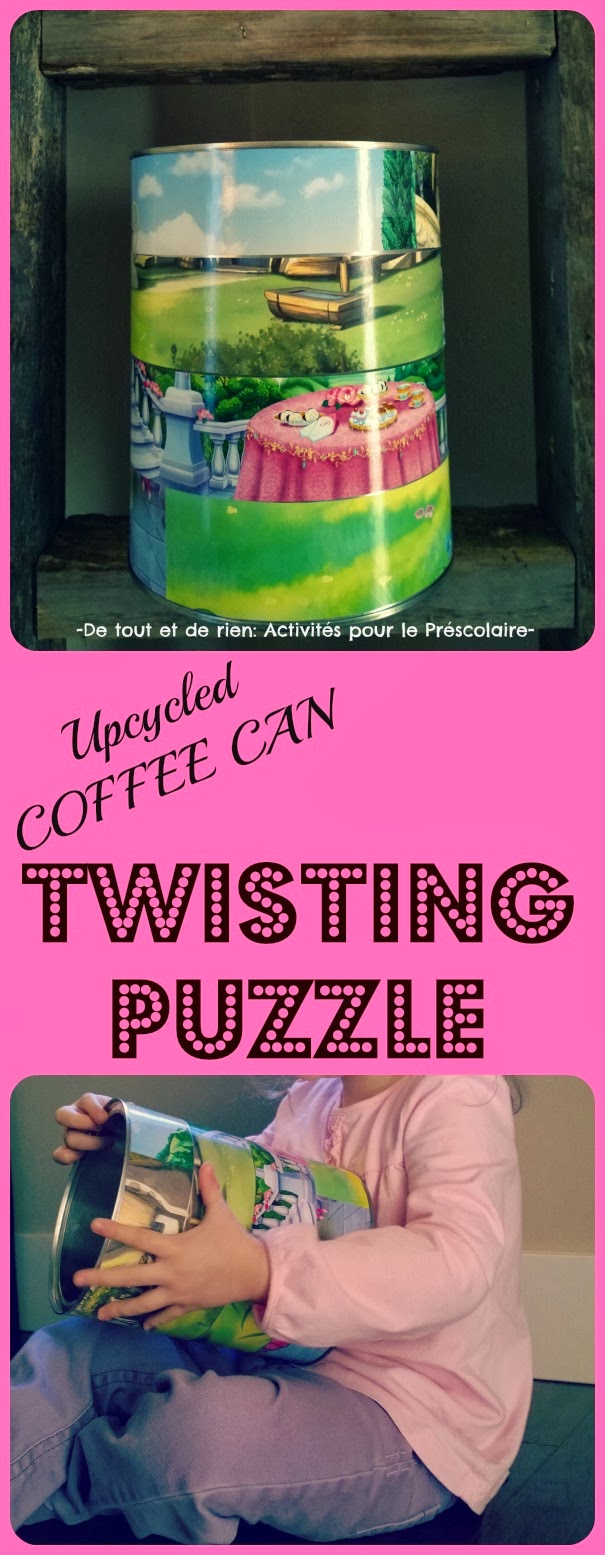Here is a fun and inovative way to make puzzles for toddlers and preschoolers. You can choose the level of difficulty by cutting more or less strips of the chosen pictures. For my daughter, I made a puzzle cylinder with 4 strips. I would suggest, if it's to be used by young toddlers, to laminate the pictures first, as they may tear while they try to rotate the strips around the coffee can.
Voici une nouvelle manière amusante de faire des casse-têtes pour les trottineurs et les enfants d'âge préscolaire. Vous pouvez choisir le niveau de difficulté en coupant plus ou moins de bandes de l'image choisie. Dans mon cas, j'ai choisi de faire un casse-tête rotatif à 4 bandes. Je vous suggère de faire plastifier les photos, préalablement, si les casse-têtes seront utilisés par de très jeunes enfants.
Children have to rotate the strips around the coffee can to complete the puzzle. And of course, the rotating puzzle can be used as a drum.... Here is a little video of the twisting puzzle in action.
Les enfants doivent tourner les bandes autour de la canne de conserve afin de compléter l'image. Et bien, sûr, le casse-tête peut aussi sevir de tambour... Voici un petit vidéo qui nous montre le casse-tête rotatif dans le feu de l'action.
Using invisible tape, I put two different pictures together and then I cut it in strips.
Avec du ruban adhésif transparent, j'ai collé deux images ensemble pour n'en créer qu'une seule et je l'ai ensuite découpé en plusieurs bandes.
I stuck them together on the tin can with invisible tape, strip by strip.
Je les ai collées autour de la canne de conserve avec du ruban adhésif transparent, bande par bande.
Voila! Children can twist the puzzle to complete the pictures!
Voilà! Les enfants peuvent maintenant compléter les images du casse-tête rotatif!
 |
| The puzzle, here, is half-way done... |
 |
| The puzzle is done! |
 |
| The other picture of the rotating puzzle picture. |
My daughter had SO MUCH fun with this new kind of puzzle.
Ma fille a eu TELLEMENT de plaisir avec ce nouveau genre de casse-tête.







